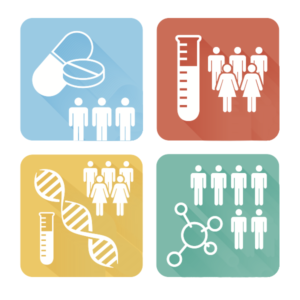Clinical Drug Development and European Sponsors

Efforts to Harmonize Regulatory Requirements
The drug development process is constantly evolving and incorporating advances in scientific research, including progress in personalized medicine and big data use. However, clinical drug development and the approval of new drugs are regulated by a number of different agencies around the world. The lack of sufficient harmonization of drug development and regulation among regulatory agencies may create challenges for study sponsors, as regulatory approvals are required in multiple countries.
Recent efforts have been focused on harmonizing drug development and approval procedures among various regulatory agencies. The work of the International Council for Harmonisation (ICH, including its M13 initiative to harmonize bioequivalence requirements), the World Health Organization (WHO), and the International Organization for Standardization (ISO) has significantly contributed to this process. Moreover, regulatory agencies collaborate to align their priorities and drug evaluation procedures. Nevertheless, substantial differences still exist among the regulatory processes in different regions of the world, posing common and specific challenges to the pharmaceutical industry in each region.
European Clinical Drug Development
The pharmaceutical industry has been recognized as an important asset to the European economy. Notably, the European pharmaceutical market is the second largest in the world, after the North American market. The estimated costs for pharmaceutical research and development in Europe are high, reaching over 39 billion Euro in 2020. In addition, European pharmaceutical companies face increasing competition, highlighting the significance of streamlining clinical drug development and its regulation.
The European Commission has set forward the Pharmaceutical Strategy for Europe as a regulatory framework to advance clinical drug development. The strategy highlights four main goals:
-
- to guarantee access to affordable medications and to address medical needs that have not yet been met;
- to support competitiveness, innovation, and sustainability and to develop medicines that are effective, safe, and greener;
- to promote the preparedness and response to crises, to secure and diversify supply chains, and to address shortages of medicines; and
- to ensure that the European Union has a strong voice globally by developing high standards for quality, efficacy, and safety.
Distinctions Among Different Regulatory Agencies for Medicines
Regulatory agencies aim to decrease the time to obtain marketing authorizations for new medicines while ensuring their safety. Even though all regulatory agencies prioritize the timely and safe approval of new medicines, there are distinctions in their organization and function. These distinctions can be exemplified by comparing the United States Food and Drug Administration (FDA) and the European regulatory system for medicines. The FDA is a centralized agency that was created as a consumer protection agency. Thus, it functions based on centralized and unified rules across all states of the United States. In contrast, the European regulatory system for medicines includes the European Medicines Agency (EMA), the European Commission, and a network of decentralized agencies from the countries of the European Economic Area (EEA). Notably, the EMA, which was established in 1995, was developed to harmonize the drug development and approval processes among the member states of the European Union, while also maintaining the national autonomy of the individual countries. Clinical research organisations operating in different regions of the world need to be aware of the distinctions among different regulatory agencies, such as the centralized FDA in the US and the decentralized European regulatory system, to navigate the drug development and approval processes.
European Drug Approval Routes
In the European regulatory framework, several distinct routes for drug authorization have been defined for clinical research organisations to follow, including centralized, decentralized, and mutual recognition procedures.
The centralized procedure involves submitting a new drug application to the EMA and its European Union-wide evaluation. The goal is to obtain a marketing authorization to market the medicine across the European Union. The scope of the centralized procedure has expanded over the years, and this procedure is currently employed for most medicines containing new active substances. However, many medicines presently approved in Europe have been evaluated using decentralized or mutual recognition procedures.
The decentralized procedure has been designed for the approval of new drugs that have yet to be authorized in Europe and are not within the scope of the centralized procedure. Companies can submit the application for new drug approval for simultaneous authorization in more than one European Union member state.
The mutual recognition procedure concerns medicines that have already been authorized in one of the European Union member states. Following the mutual recognition procedure, member countries can rely on each other’s scientific assessment to recognize a medicine’s authorization in another European Union country.
Clinical Trial Regulations of Different Agencies
Different regulatory agencies may also have specific requirements for the initiation and performance of clinical trials, including bioequivalence studies. In the United States, to initiate the first clinical trial for a new chemical entity (NCE), a sponsor has to submit an Investigational New Drug (IND) application to the FDA. After an IND submission, the study sponsor should wait 30 days prior to initiating any clinical trials, during which time the FDA reviews the IND for safety. In Europe, until recently, sponsors had to submit a clinical trial application (CTA) to the individual country where a clinical trial would be conducted. However, this European process has now been unified, and new CTAs are submitted via the European Union’s clinical trials register (EU CTR). In Canada, CTAs are submitted to Health Canada, which reviews them within 30 days, except for comparative bioavailability studies and Phase I trials in healthy adult volunteers, which have an administrative review target of 7 days.
Choosing a Competent & Efficient Partner for European Sponsors
Clinical drug development programs of European sponsors require multifaceted and competent support to design and conduct clinical trials that not only are compliant with European regulatory requirements, but can also be used in new drug approval applications in countries outside the European Union. To achieve these goals, clinical research organizations working with European sponsors should be experienced in all aspects of drug development, including trial design, conduct, statistical analysis, and regulatory activities.
Our extensive and multidimensional early phase clinical trial expertise can address the needs of clinical drug development programs of European sponsors.
Why Choose BioPharma Services for Your Clinical Drug Development?
BioPharma Services, Inc. (BioPharma) is a contract research organization (CRO) with extensive and multidimensional early clinical expertise to address the needs of clinical drug development programs of European sponsors. BioPharma Services’ strengths include the following:
A full-service Phase I CRO with competency in all aspects of early clinical drug development – BioPharma is a full-service phase I CRO with proficiency in all aspects of clinical trial design and conduct. Its multidisciplinary, award-winning team has successfully designed and conducted over 2,000 clinical trials. To address all needs of our clients’ clinical drug development programs, we rely on the expertise of our principal investigators (PIs) who have over 50 years cumulative experience.
Niche expertise in Phase 1 clinical trials – BioPharma has experience with various Phase 1 clinical studies, including first-in-human, single-ascending-dose, multiple-ascending-dose studies, food effect, cardiac, human abuse potential, and bioequivalence studies. Moreover, BioPharma can design and conduct various pharmacokinetic and pharmacodynamic measurements to meet each study’s specific objectives.
Experienced regulatory scientists with expertise across all regulatory landscapes – BioPharma’s regulatory experts have experience working across various regulatory regions. They have successfully passed over 30 regulatory inspections by a number of agencies, including:
-
- The FDA
- Health Canada and the Standard Council of Canada (SCC)
- The WHO
- The French National Agency for the Safety of Medicines and Health Products (ANSM)
- The United Kingdom Medicines and Healthcare products Regulatory Agency (MHRA)
- The Danish Medicines Agency (DKMA)
- The Federal Office for Safety in Health Care (BASG) and Austrian Medicines and Medical Devices Agency (AGES MEA)
- The Brazilian Health Regulatory Agency (Anvisa)
- Good laboratory practice (GLP) accreditation for bioanalytical laboratories
BioPharma’s strategy involves our regulatory experts from the initial stages of planning Phase 1 clinical trials to ensure that all clinical drug development programs align with the requirements of the relevant regulatory agencies.
Personalized service with fast turnaround times – We design our clients’ clinical trials after discussing their goals in detail and considering their preclinical datasets. Our team is focused on providing quality services with quick turnaround times to accelerate the drug development process.
BioPharma Services, Inc., a Think Research Corporation and clinical trial services company, is a full-service Contract Clinical Research Organization (CRO) based in Toronto, Canada, specializing in Phase 1 clinical trials 1/2a and Bioequivalence clinical trials for international pharmaceutical companies worldwide. BioPharma has clinical facilities both in the USA and Canada with access to healthy volunteers and special populations.



